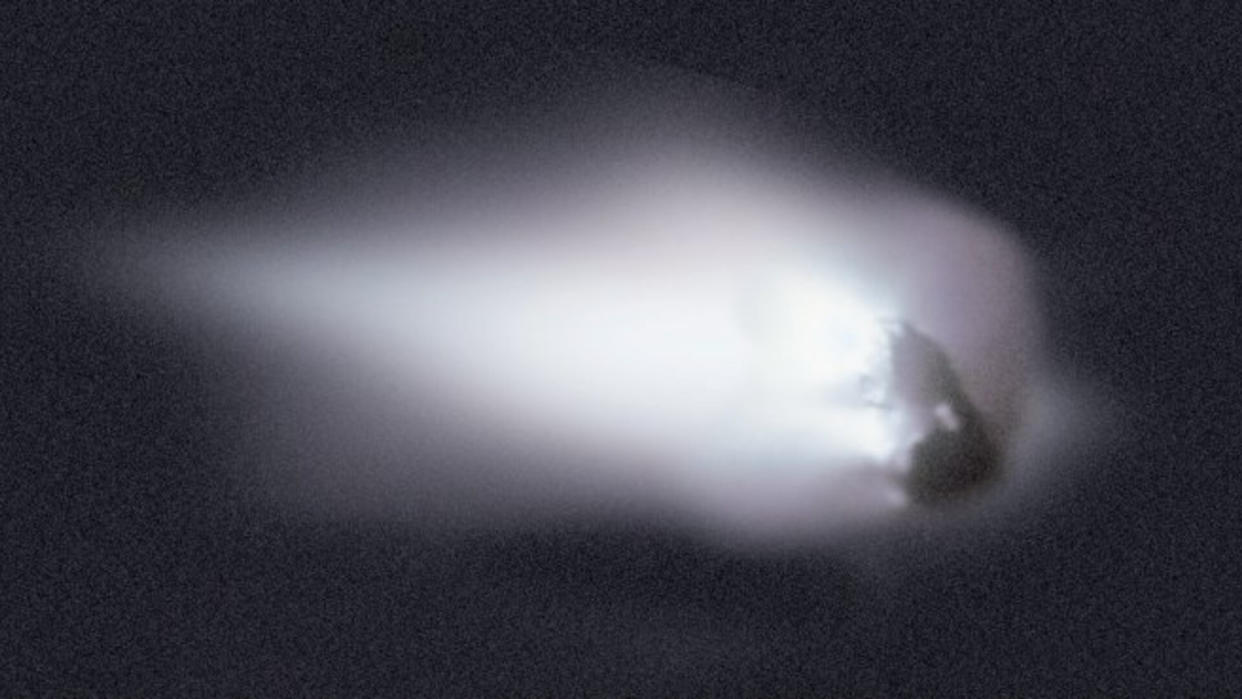Halley's Comet has begun its return journey to Earth

After zooming away from Earth for nearly 40 years, Halley's Comet has finally turned tail and started heading back our way — setting the stage for a spectacular close-up in 2061.
On Saturday, Dec. 9, the famous comet was predicted to reach its farthest point from the sun, also known as its aphelion, at a distance of about 35 astronomical units (AU) — or about 35 times the distance between Earth and the sun, according to NASA. That puts the comet well beyond the orbit of Neptune, and nearly in the front yard of Pluto, which orbits at about 39 AU.
In a sense, this is the midway point of Halley's routine, 76-year orbit of the sun. For the last 38 years or so, the comet has moved millions of miles farther away from us every day; now, it will spend the next 38 years moving closer.
Related: 'Planet killer' asteroids are hiding in the sun's glare. Can we stop them in time?
Halley's last close approach of the sun (or its perihelion) was on Feb. 9, 1986, when it swooped to within 54.6 million miles (87.8 million km) of the sun, according to NASA; that's about 0.58 AU from the our home star, or just interior to the orbit of Venus. Astronomers haven't seen the comet at all since 2003, after which it became too small and dim to see.
Comets are balls of ice and dust that orbit the sun. These celestial objects are best known for their "tails," which form when solar radiation vaporizes ice particles in the comet's body, causing gas and dust to stream behind it.
Halley's Comet was the first comet predicted to return to Earth's skies. Astronomer Edmond Halley observed the comet in 1682 without knowing exactly what it was — he first dubbed it a "hairy star," according to skywatching news site EarthSky.
Halley compared his observations to similar sightings reported in 1531 and 1607, and he hypothesized that all three sightings were repeat appearances of the same object. Halley predicted the object would appear again in 1758 — and so it did. Halley, who died in 1742, never got to confirm his predictions, although future scholars eventually named the comet in his honor.
RELATED STORIES
—'Bouncing' comets may be delivering the seeds of life to alien planets, new study finds
Halley's Comet makes its next close approach to the sun on July 28, 2061. Until then, you can experience the "hairy star's" shimmering legacy twice a year, during two meteor showers associated with icy debris left behind by the comet on prior trips across Earth's orbit. The Delta Aquariid meteor shower in May and the Orionid meteor shower in October both occur when old debris from Halley's Comet falls through Earth's atmosphere, burning up as "shooting stars."
Editor's note: This article was updated on Dec. 11 to reflect that the comet has reached its aphelion and is now headed toward the inner solar system again.

